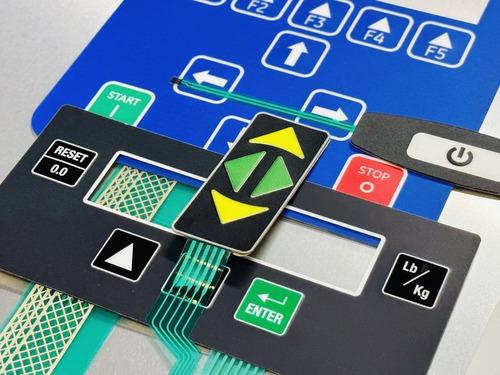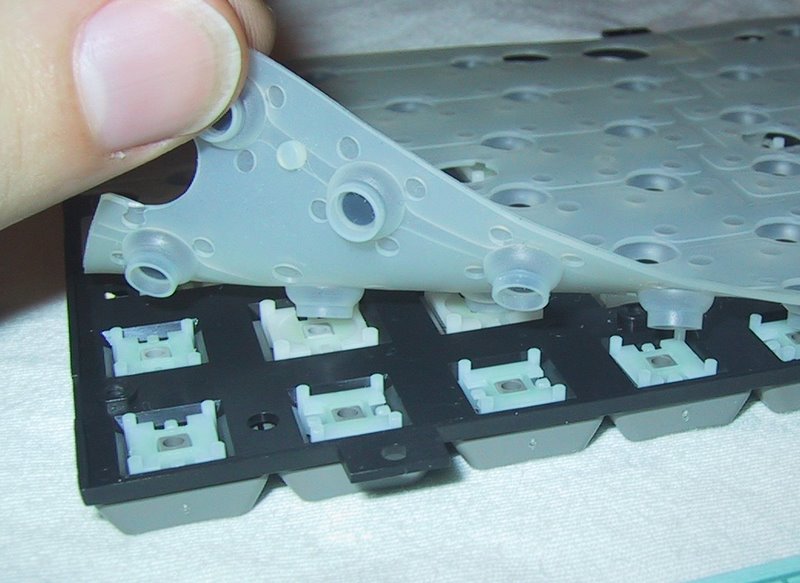Why Membrane Switches Are a Trustworthy Choice for Interface Solutions
Why Membrane Switches Are a Trustworthy Choice for Interface Solutions
Blog Article
The Ultimate Source on Membrane Layer Switches Over: Layout, Functionality, and Applications
Membrane layer switches over work as an intriguing intersection of style and performance, playing a crucial duty in modern-day interface throughout various fields. This source unpacks the important components that contribute to their efficiency, including visuals overlays and circuit traces, while likewise clarifying the systems behind their stress activation. As we discover the diverse applications of membrane buttons, it comes to be obvious that their flexibility and resilience are critical in atmospheres ranging from health care to customer electronic devices. The subtleties of their layout and functional concepts may expose also much deeper understandings worth considering.

Understanding Membrane Switches
Membrane buttons are a sort of customer interface innovation widely used in different electronic gadgets, characterized by their thin, flexible style and performance. These switches consist of numerous layers that consist of graphic overlays, sticky layers, and circuitry, allowing a efficient and portable user interface for individuals. They can be located in home appliances, clinical devices, and industrial control board, giving a trusted approach for customer communication.
One of the key benefits of membrane buttons is their capability to resist contaminants such as dirt and wetness, making them appropriate for environments where longevity is essential. Their low-profile design enables seamless integration right into various applications, while the adjustable graphic overlays boost user experience by offering clear aesthetic responses. In addition, membrane buttons can suit a range of technologies, such as responsive feedback and backlighting, further enhancing their use.
The manufacturing process for membrane switches generally involves screen lamination, printing, and die-cutting techniques, making sure precision and consistency in production. Overall, membrane changes represent a functional and effective service for modern-day electronic tools, incorporating performance with aesthetic charm in interface style.
Trick Components and Layout Elements
A range of essential components and style aspects collaborated to produce a reliable membrane button. At the core, the visuals overlay serves both visual and practical objectives, providing an user-friendly interface while protecting inner elements from environmental factors. The option of materials, normally polyester or polycarbonate, affects resilience and responsive feedback.
Below the overlay, the adhesive layer ensures the button adheres securely to the substrate, which can be plastic, steel, or glass. The spacer layer is important, as it preserves the required gap between the circuit and the overlay layers, allowing for reliable actuation. Membrane Switches. Circuit traces, normally made from conductive ink or adhesive, are published on a flexible substratum, enabling electrical signals to be sent when stress is applied
Design considerations also include the plan of responsive domes or embossing that give physical comments to the customer, improving the total experience. Additionally, the design and spacing of the switches have to be optimized for convenience of use, ensuring that individuals can navigate the user interface intuitively. Generally, these elements and design aspects work synergistically to create a dependable, practical membrane button customized to particular applications.
Capability and Operation Mechanism
At the heart of efficient performance for membrane switches lies their functional mechanism, which promotes customer interaction through an easy yet effective layout. These switches operate the concept of stress activation, where a customer uses pressure to a designated area of the button (Membrane Switches). This action presses the layers of the switch, finishing an electrical circuit that sends out a signal to the connected device
The construction typically consists of a top graphic layer, a sticky spacer layer, and a lower circuit layer, which jointly create a durable interface. When pressure is applied, the leading layer breaks down against the bottom read circuit layer, enabling conductive traces to connect. This design not only enables clear tactile responses yet additionally guarantees durability and dependability, as the buttons are frequently resistant to dirt and wetness.
Moreover, the adaptability of membrane layer switches over allows for integration with different innovations, consisting of LED indicators and microcontrollers, boosting their capability. By supplying a structured user interface that reduces mechanical wear, membrane switches over remain a popular selection in applications varying from customer electronic devices to commercial devices, making sure optimal performance and user fulfillment across diverse environments.
Sorts Of Membrane Layer Buttons

One more substantial group is illuminated membrane switches, which integrate backlighting to enhance exposure in low-light conditions. These switches are often used in control panels and control panels where clear visibility is important.
Additionally, there are custom membrane changes made to satisfy details dimensional, visual, and functional demands. These customizations can consist of special forms, colors, and designs, permitting seamless assimilation into numerous devices.

Applications Throughout Numerous Industries
Just how do membrane layer switches enhance capability across varied sectors? These versatile components are indispensable to numerous applications, supplying structured individual interfaces and durable efficiency. In the medical field, membrane layer switches play an important role in devices such as analysis devices and client tracking systems, where integrity and ease of cleaning are critical. Their ability to endure severe atmospheres makes them ideal for lab instruments and surgical tools.
In the automotive industry, membrane switches are commonly used in dashboards and control board, giving intuitive controls that improve chauffeur safety and security and comfort. The customer electronic devices look at here now field additionally takes advantage of their adjustable and lightweight functions, allowing sleek styles for mobile phones and home appliances.
Moreover, membrane layer switches locate applications in industrial automation, where they add to efficient machinery procedure and tracking systems. Their resistance to dirt and moisture makes sure performance sought after problems (Membrane Switches). In addition, the food and drink sector employs membrane layer buttons for equipment control, where health and resilience are vital
Final Thought
In final thought, membrane layer switches stand for a critical innovation in user interface technology, identified by their unique style and functionality. The convenience of membrane switches facilitates their application throughout varied sectors, from clinical devices to customer electronic devices.
Membrane layer changes serve as an intriguing junction of layout and functionality, playing a critical role in modern user interfaces across different markets.Membrane layer switches are a type of customer interface innovation widely used in numerous electronic tools, characterized by their thin, versatile style and capability.At the heart of effective performance for membrane layer changes lies their operational system, which assists in individual communication through a basic yet effective design. These switches operate on the concept of pressure activation, where a user uses pressure to a designated area of the button.In final thought, membrane layer switches over stand for a crucial advancement in individual interface innovation, defined by their one-of-a-kind design and functionality.
Report this page